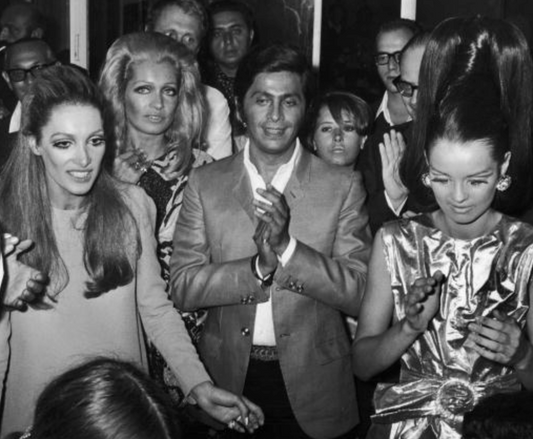talkingfashion

History of Valentino
History of Valentino By Paige McKirahan There are few words that you think of when you hear Valentino, and most of them are associated with luxury. This haute couture...
History of Valentino
History of Valentino By Paige McKirahan There are few words that you think of when you hear Valentino, and most of them are associated with luxury. This haute couture...
A Fashion Year in Review
A Fashion Year in Review By Paige McKirahan As 2018 is coming to a close and everyone is making big plans for 2019, we here at TalkingFashion thought it...
A Fashion Year in Review
A Fashion Year in Review By Paige McKirahan As 2018 is coming to a close and everyone is making big plans for 2019, we here at TalkingFashion thought it...
The Master of Bias: Charles Kleibacker
The Master of Bias: Charles Kleibacker By Paige McKirahan Though there have been many iconic designers in the past century that have made a substantial mark on the fashion...
The Master of Bias: Charles Kleibacker
The Master of Bias: Charles Kleibacker By Paige McKirahan Though there have been many iconic designers in the past century that have made a substantial mark on the fashion...
Pop The Cork on New Year’s Eve Fashion!
Pop The Cork on New Year’s Eve Fashion! By Paige McKirahan As the biggest party of the year is looming towards us at a rapid rate, panic surrounding finding...
Pop The Cork on New Year’s Eve Fashion!
Pop The Cork on New Year’s Eve Fashion! By Paige McKirahan As the biggest party of the year is looming towards us at a rapid rate, panic surrounding finding...
Calling All Columbus Readers!
Calling All Columbus Readers! By Paige McKirahan If you have found yourself in Ohio for the holidays, you may be left wondering how to spend your last week of...
Calling All Columbus Readers!
Calling All Columbus Readers! By Paige McKirahan If you have found yourself in Ohio for the holidays, you may be left wondering how to spend your last week of...
History of Hobe: Vintage Figural Fun
History of Hobe: Vintage Figural Fun By Paige McKirahan When discussing vintage figural designers, it is only appropriate that we discuss Jacques Hobe, master goldsmith and the creator of...
History of Hobe: Vintage Figural Fun
History of Hobe: Vintage Figural Fun By Paige McKirahan When discussing vintage figural designers, it is only appropriate that we discuss Jacques Hobe, master goldsmith and the creator of...
